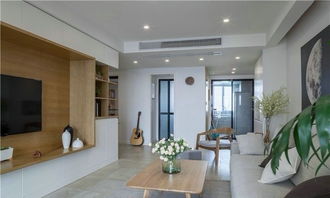 摘要:
Title:JapaneseInteriorDesignShowcaseIntroduction:Inrecentyears,Japaneseinteriordesignhasga...
摘要:
Title:JapaneseInteriorDesignShowcaseIntroduction:Inrecentyears,Japaneseinteriordesignhasga... Title: Japanese Interior Design Showcase

Introduction:
In recent years, Japanese interior design has gained significant popularity worldwide due to its unique blend of traditional and modern elements. This article presents a collection of notable Japanese interior design case studies, providing an insightful analysis of their key features and design principles.
1. ZenInspired Minimalism:
One prominent aspect of Japanese interior design is its emphasis on simplicity and minimalism. Zeninspired spaces promote a sense of calm and serenity, characterized by clean lines, natural materials, and a limited color palette. Examples include tatamimat flooring, shoji screens, and the use of muted earth tones.
2. Fusing Tradition with Modernity:
Japanese interior design seamlessly blends traditional elements with contemporary aesthetics. For instance, traditional sliding doors (fusuma) may be replaced with sleek, sliding glass panels to create a harmonious fusion of old and new. This integration of contrasting elements creates a visually stunning and culturally rich ambiance.
3. Utilizing Natural Light and Natural Materials:
The concept of harmony with nature plays a central role in Japanese interior design. The use of large windows and skylights allows ample natural light to enter spaces, creating an open and airy atmosphere. Additionally, natural materials such as wood, paper, and bamboo are frequently used to connect indoor spaces with the natural world.
4. Functional and Compact Design:
Given Japan's limited living space, functional and compact design solutions are highly valued. Intelligent use of storage solutions, such as hidden cabinets and builtin furniture, helps maximize space efficiency. Multipurpose furniture, like foldable tables and sliding partitions, enables flexible room configurations.
5. Integration of Indoor and Outdoor Spaces:
Japanese interior design often strives to incorporate outdoor elements, blurring the boundaries between indoor and outdoor spaces. Zen gardens or miniature rock gardens (karesansui) are commonly found within homes or visible from interior spaces, providing a tranquil view and enhancing the overall design aesthetic.
6. Harmonious Color Schemes:
Japanese interior design favors subtle and harmonious color schemes. Traditional colors, such as offwhite, brown, and shades of gray, are often used as a backdrop to highlight natural materials and minimalist furniture. Accents of colors, such as deep red or indigo, may be added to create visual interest and balance.
Conclusion:
The showcased Japanese interior design examples demonstrate the unique blend of traditional aesthetics and modern functionality that characterizes this style. By embracing simplicity, natural elements, and harmonious design principles, Japanese interior design creates spaces that promote relaxation, contemplation, and a peaceful coexistence with nature. Incorporating these design concepts into your own space can create a sense of tranquility and cultural appreciation.







